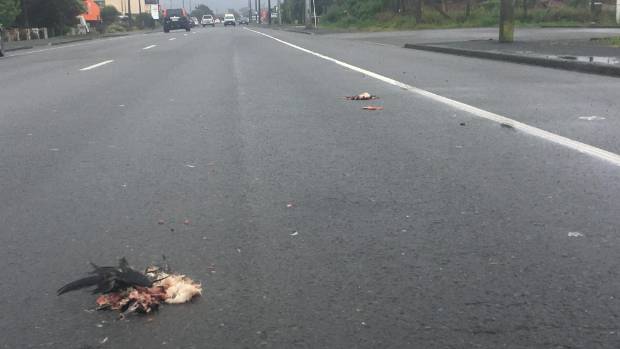 Victims of bright lights and a vehicle. A Hutton’s Shearwater is killed on a Kaikōura street
Victims of bright lights and a vehicle. A Hutton’s Shearwater is killed on a Kaikōura street
Shearwaters, and especially their fledglings, are particularly at risk of being downed by light pollution, notably from bright streetlighting, when they can be hit by vehicles and be vulnerable predators such as feral and domestic cats and dogs (click here). New Zealand’s Endangered Hutton’s Shearwater Puffinus huttoni is no exception. The species breeds naturally in only two colonies high up in the mountains of the Seaward Kaikōura Ranges behind the seaside town of Kaikōura on the east coast of South Island, fledglings are downed by bright lights in the town.
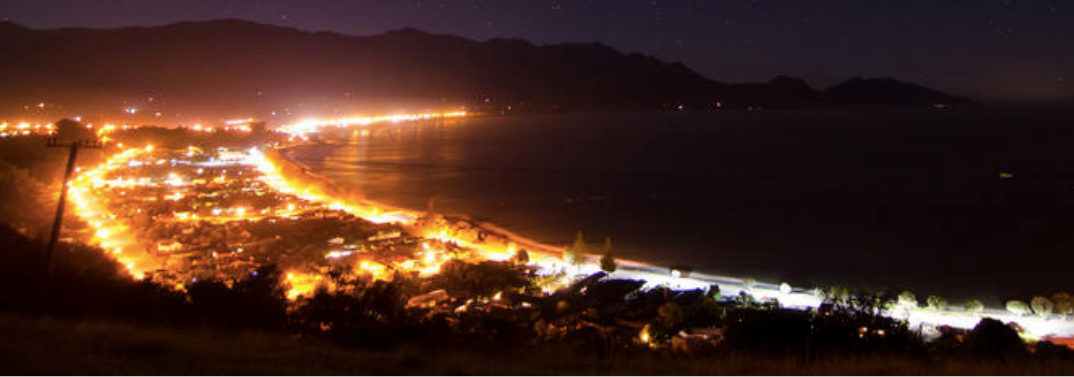
The problem: Kaikōura ablaze at night
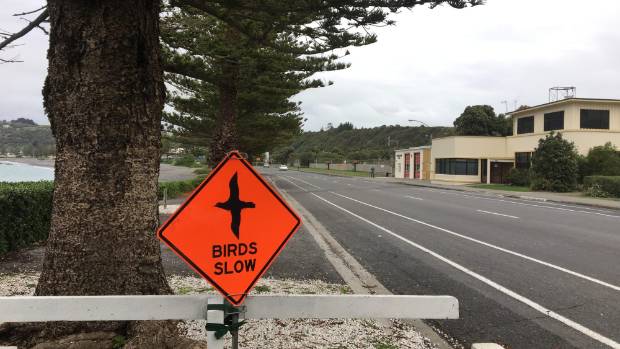
Hutton’s Shearwaters will get improved protection along Kaikōura streets when the streetlights are changed
Help is now at hand as the work is to begin replacing old-style sodium streetlights with shaded LED ones from next month. “The new lighting system will improve vision at night for people walking along the road and drivers, by directing light downwards towards the ground, and containing the spill … and it should make it less likely the incoming seabirds will get disoriented and end up in danger on the highway”. The development follows on from the district’s international dark sky sanctuary accreditation, announced by Dark Sky International in September last year. Read more here.

Ready to fledge. A Hutton's_Shearwater chick, all photographs from the Hutton’s Shearwater Charitable Trust
Read more here.
See a recent post to ACAP Latest News on Hutton’s Shearwater conservation.
John Cooper, Emeritus Information Officer, Agreement on the Conservation of Albatrosses and Petrels, 25 March 2025

 English
English  Français
Français  Español
Español 
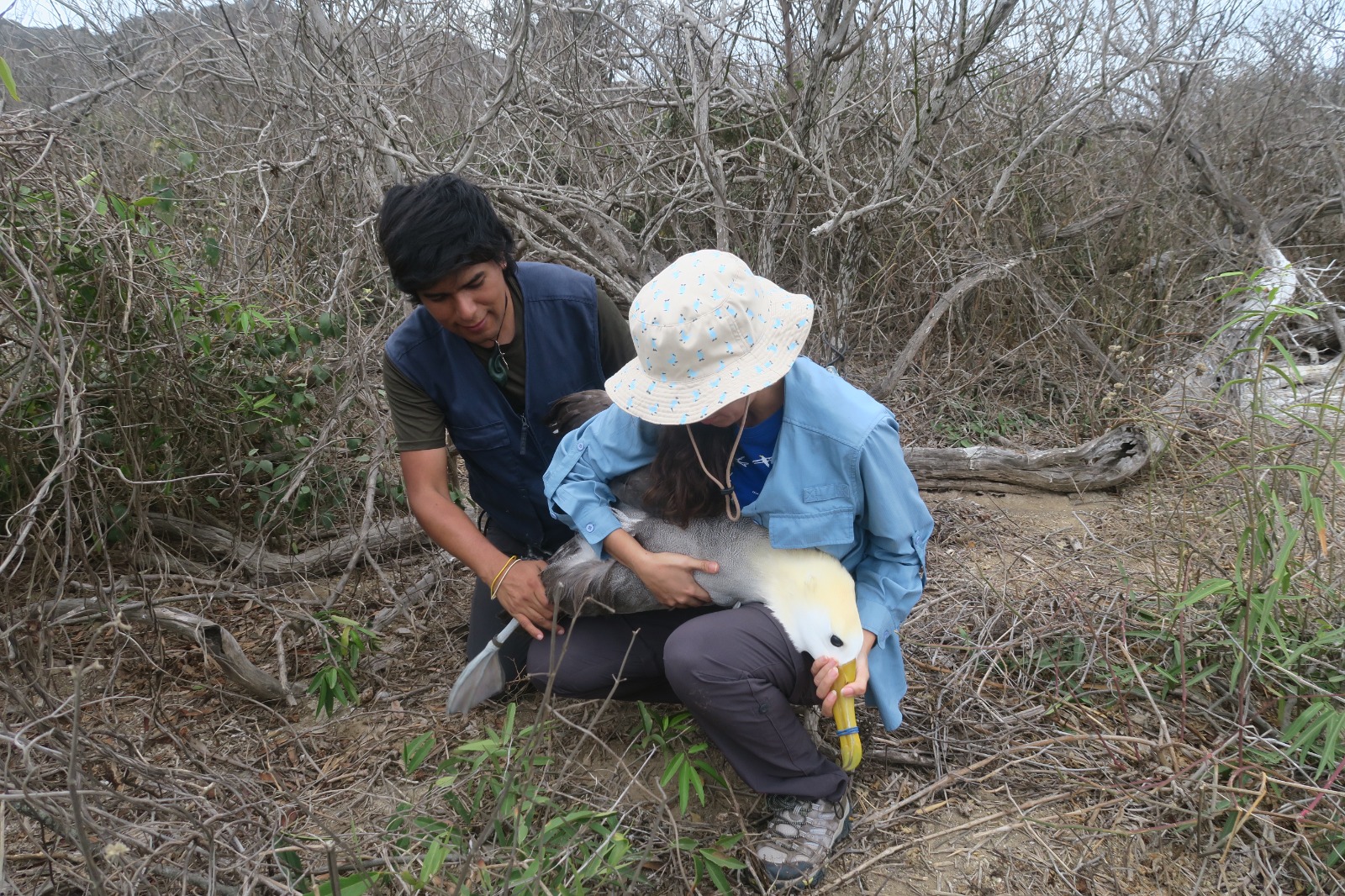
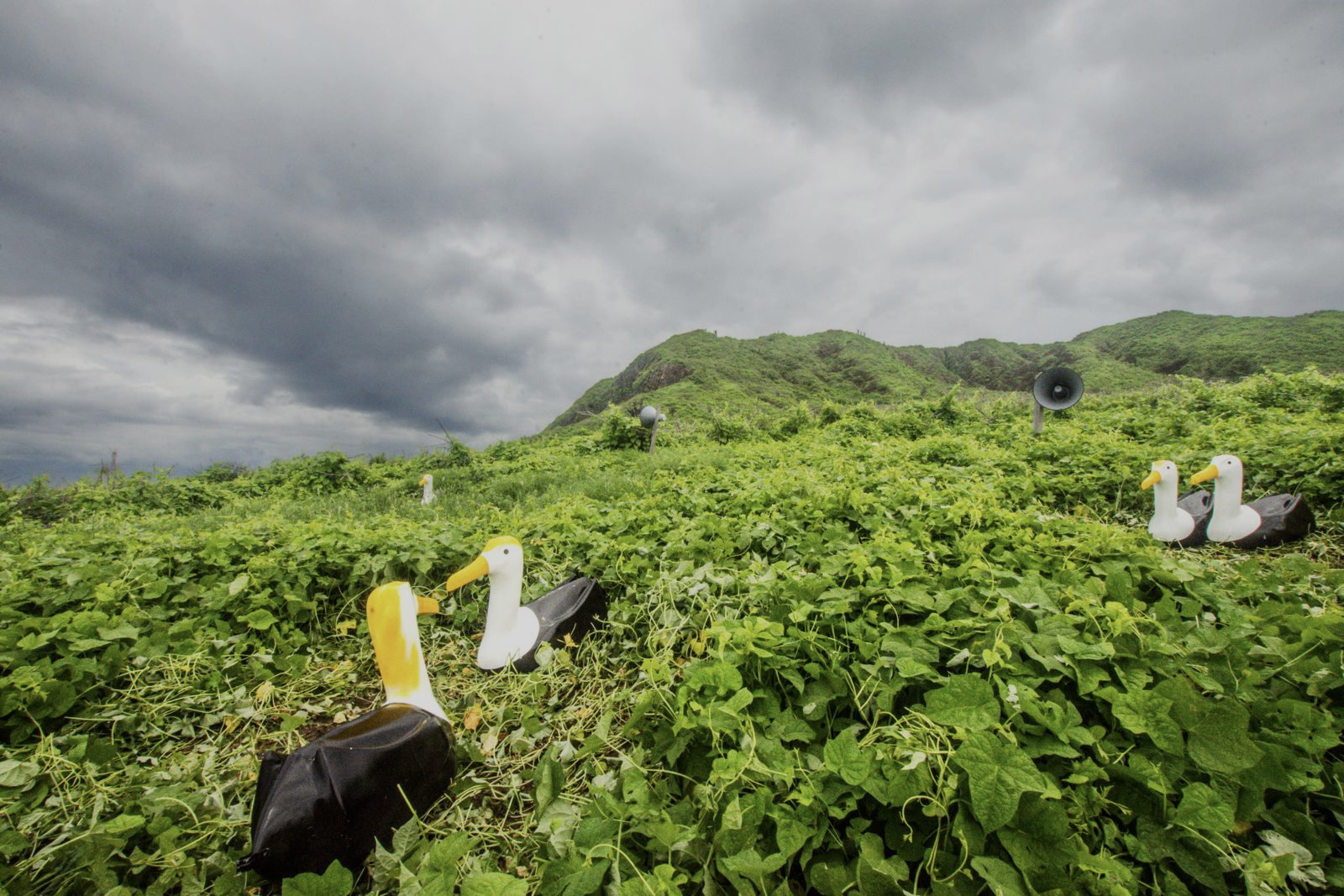
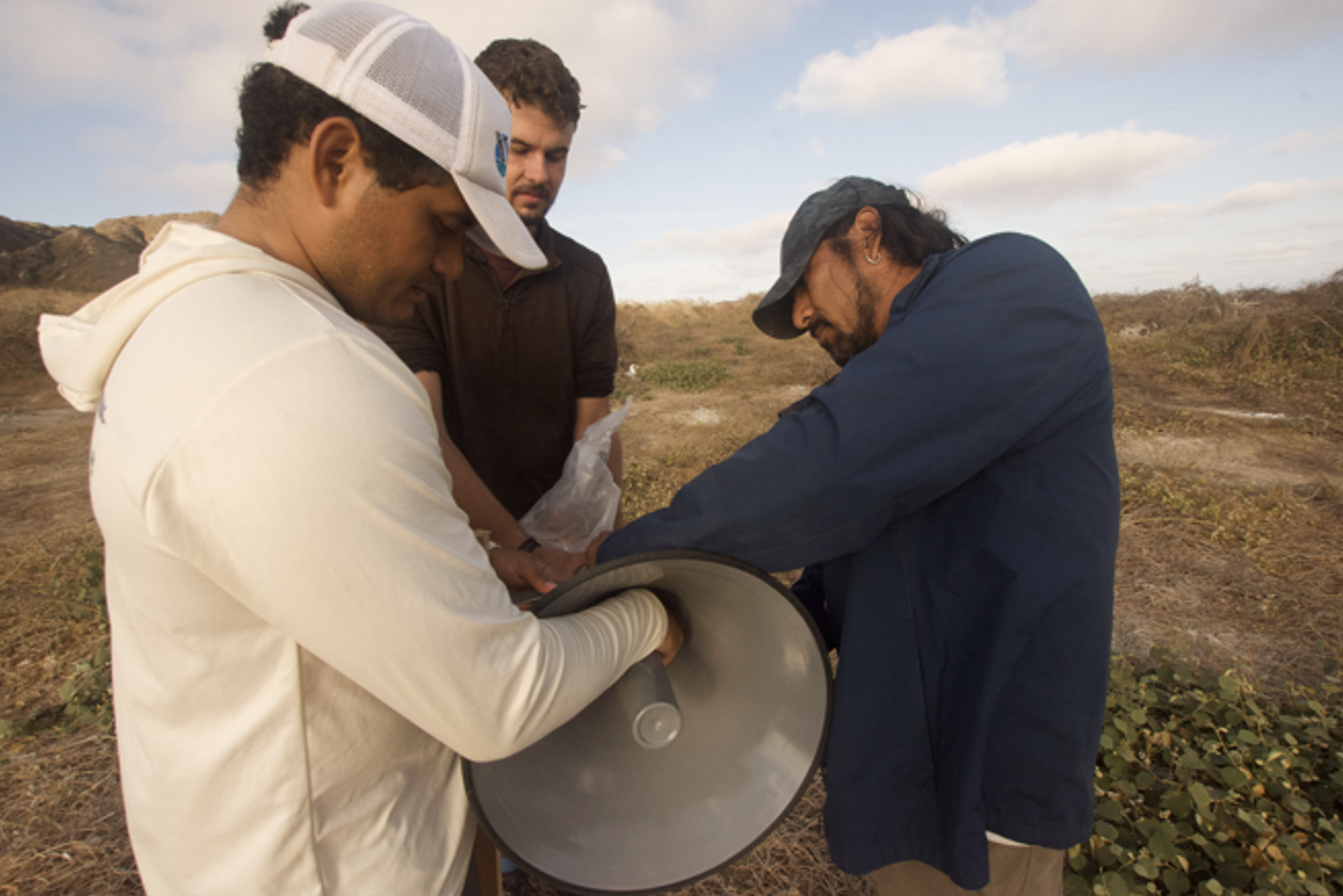
 A Hutton’s Shearwater incubates its egg in an artificial burrow in the Te Rae o Atiu colony, photograph from the Hutton's Shearwater Charitable Trust
A Hutton’s Shearwater incubates its egg in an artificial burrow in the Te Rae o Atiu colony, photograph from the Hutton's Shearwater Charitable Trust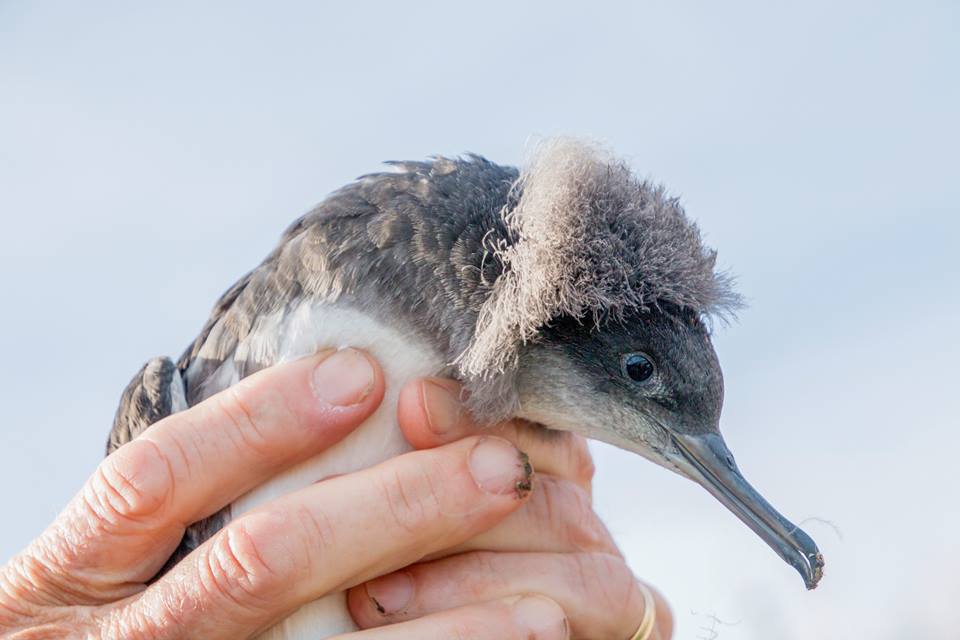

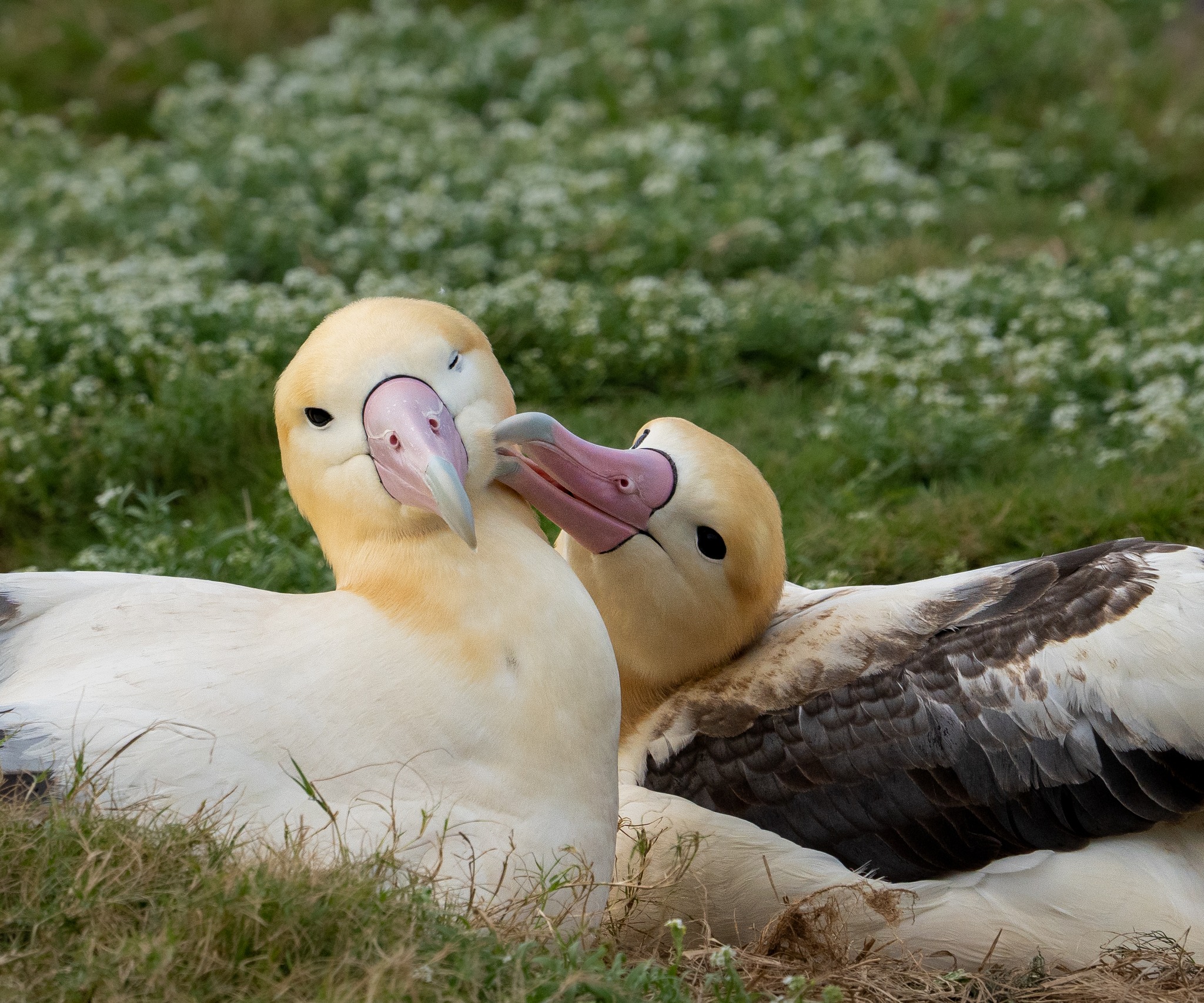 George (on left) and Geraldine, photograph by USFWS Volunteer Joe Owen
George (on left) and Geraldine, photograph by USFWS Volunteer Joe Owen Calonectris sp. shearwater with abnormal plumage, off Calheta, Madeira, Portugal, 14 November 2023, photograph by Pedro Nascimento (from the publication)
Calonectris sp. shearwater with abnormal plumage, off Calheta, Madeira, Portugal, 14 November 2023, photograph by Pedro Nascimento (from the publication)